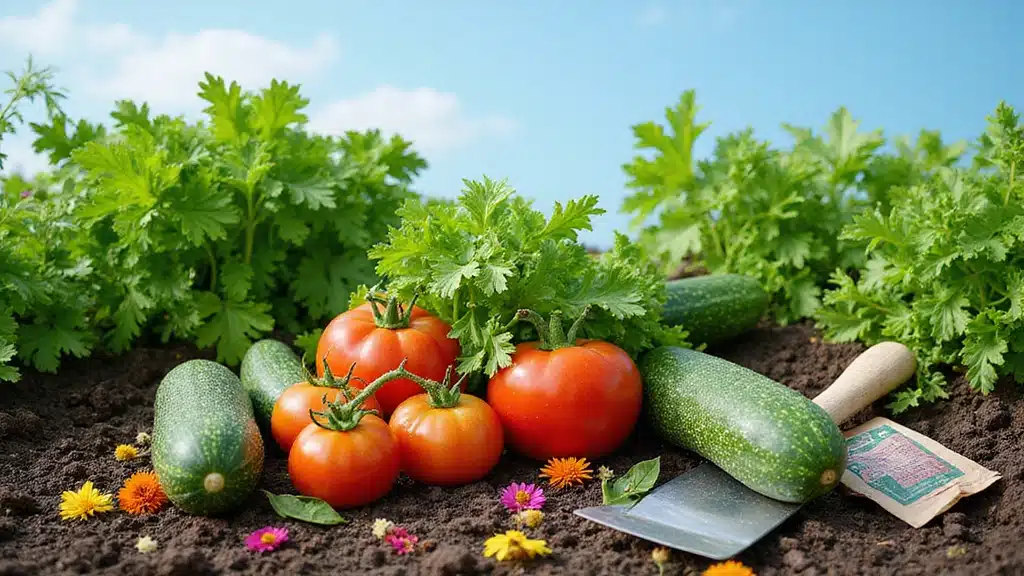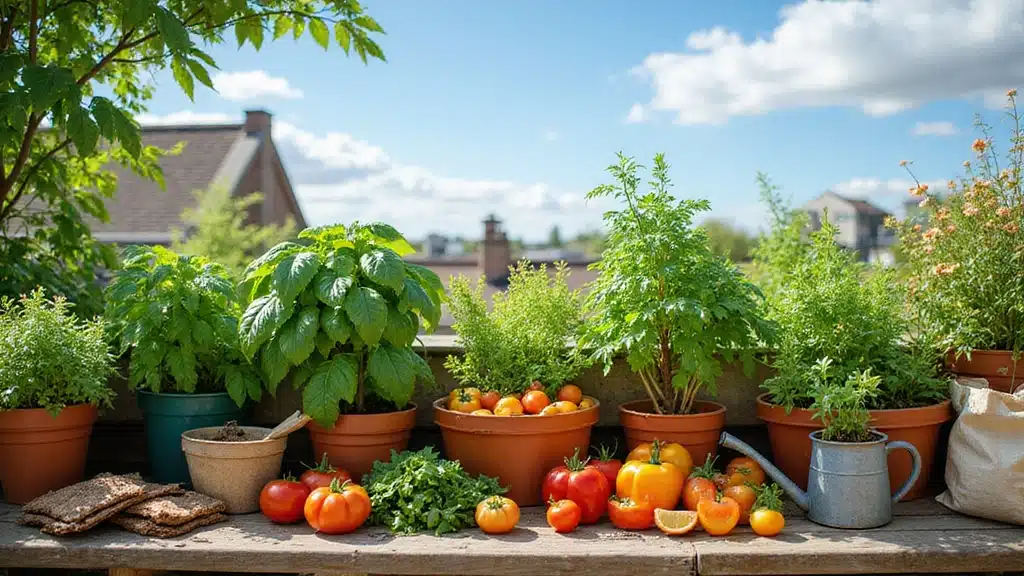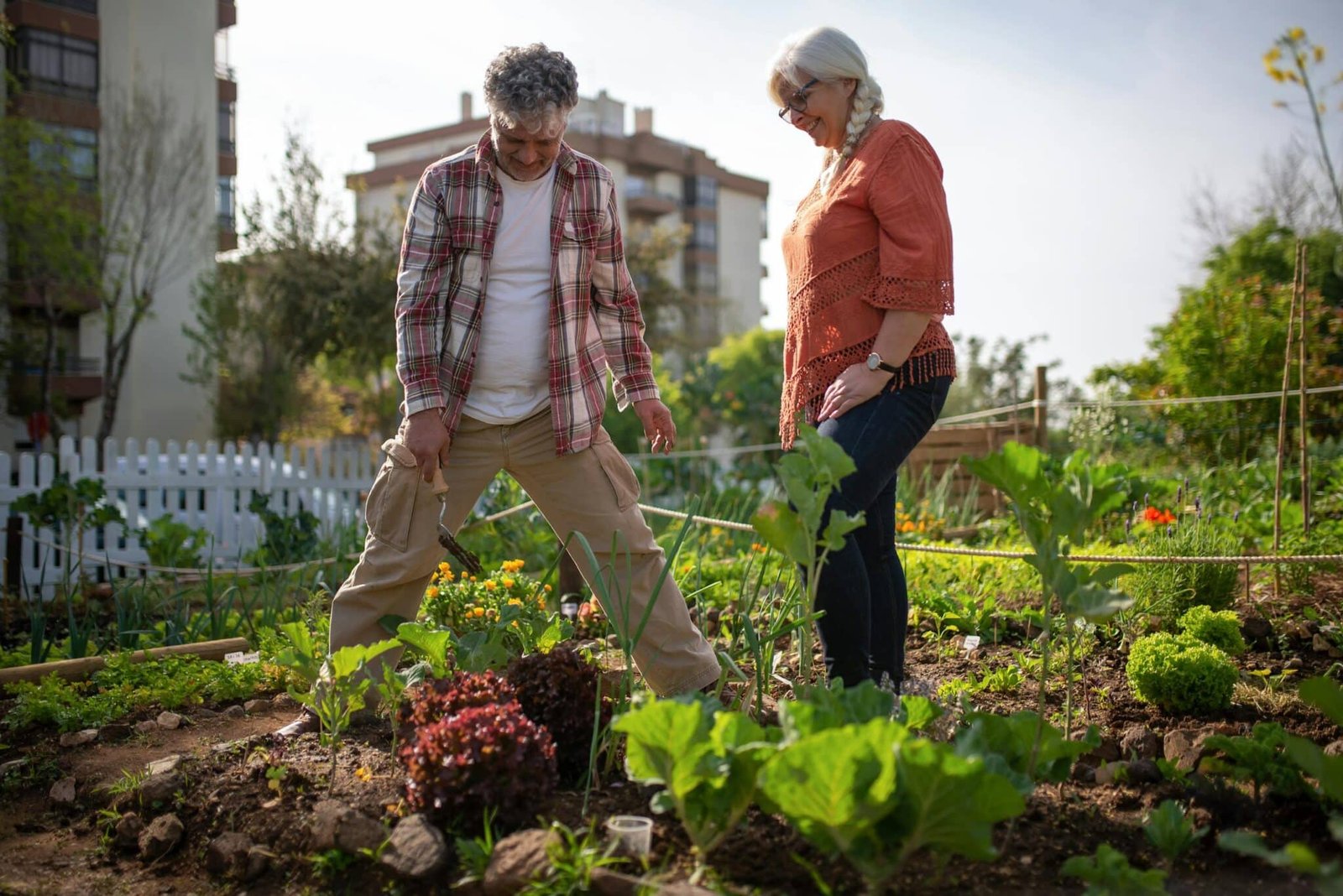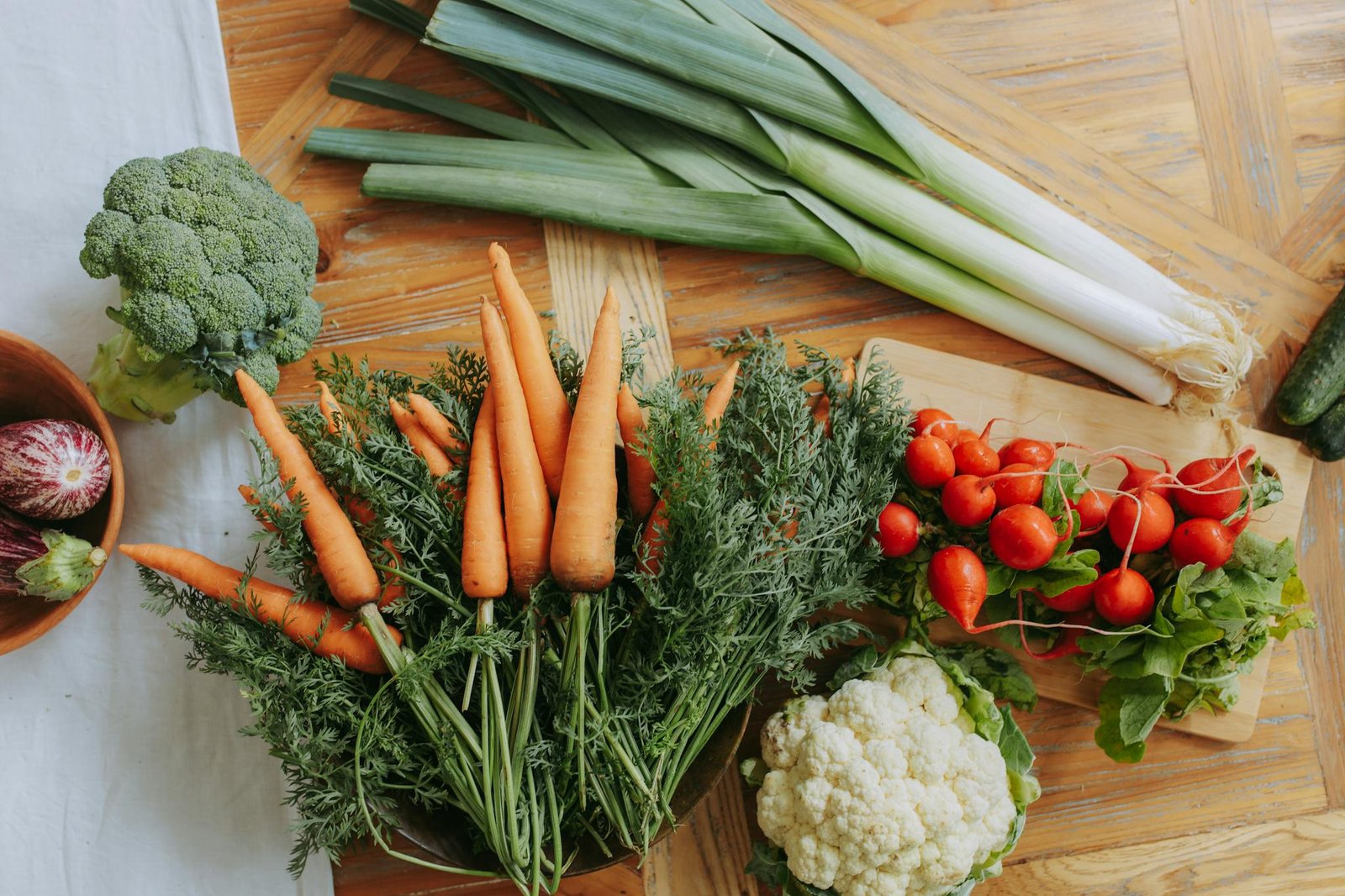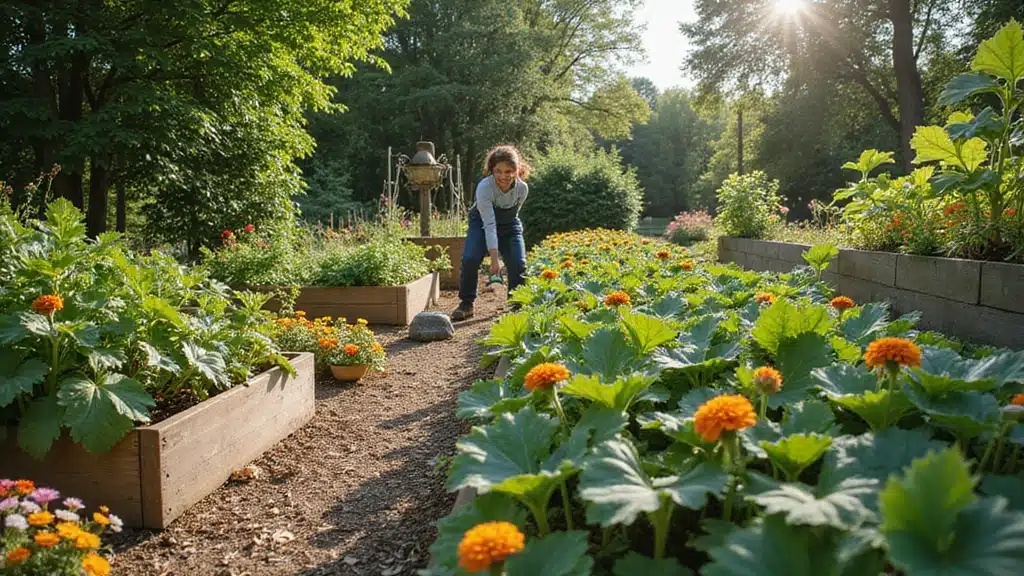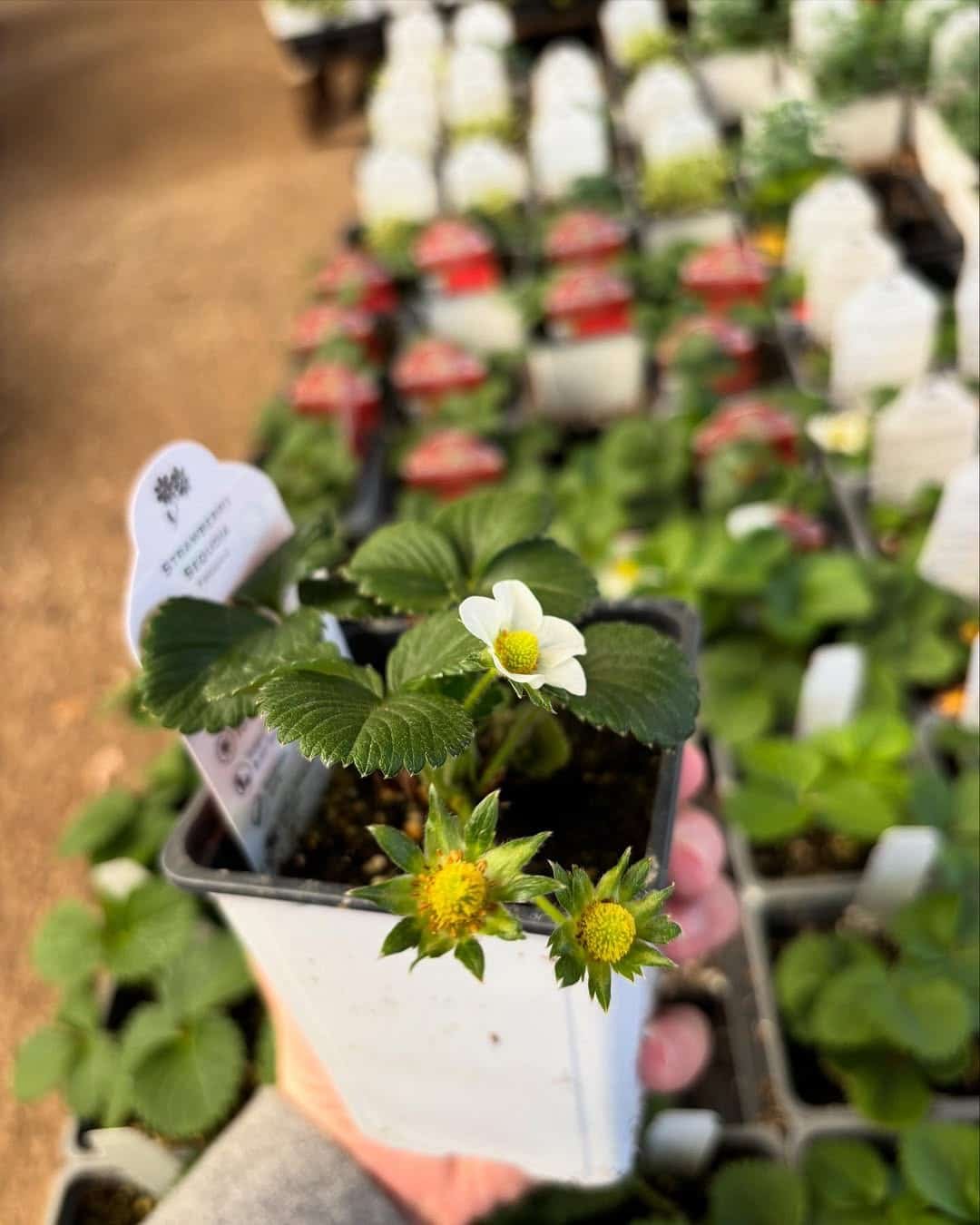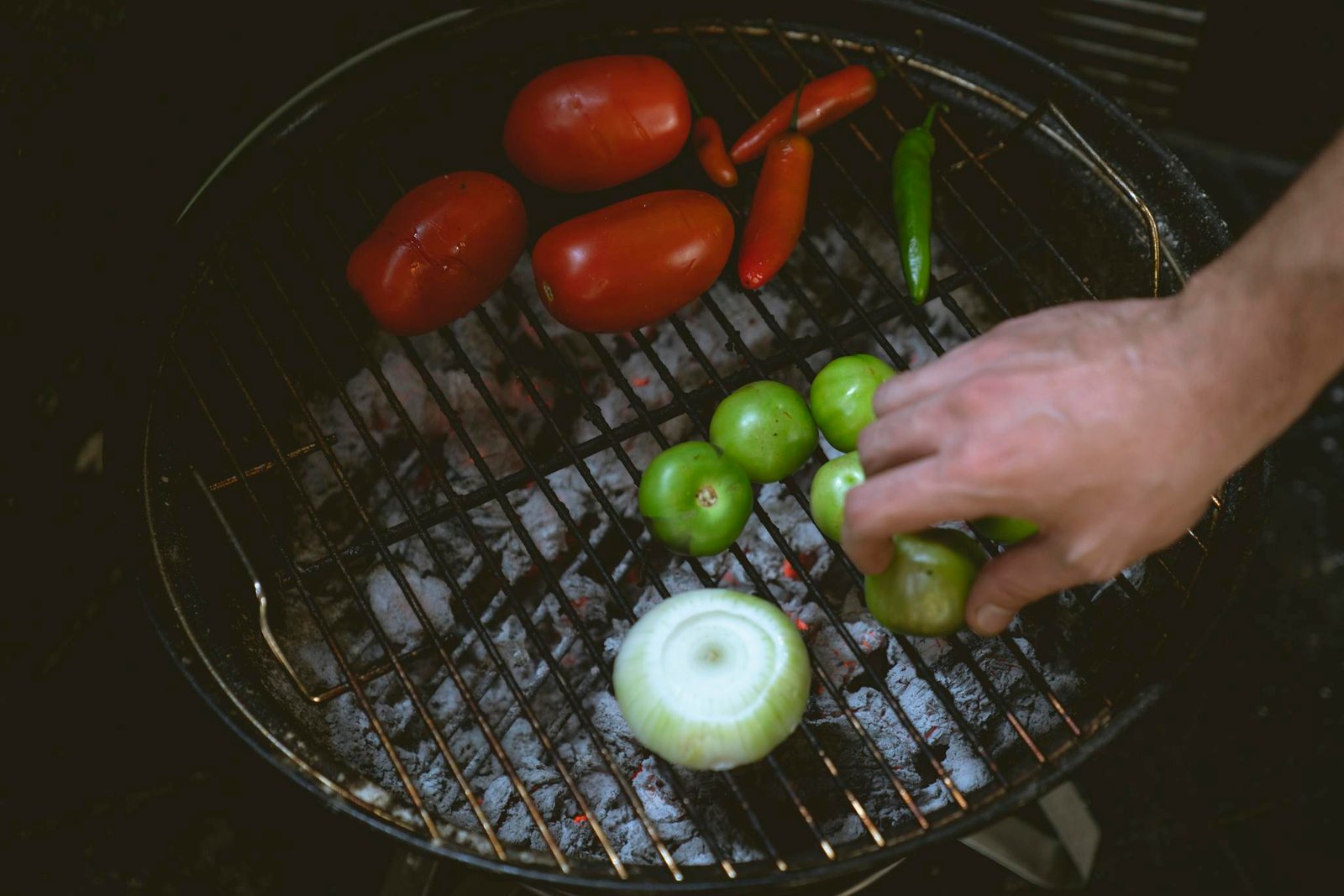Welcome to your ultimate seasonal vegetable planting guide!
In this article, we’ll take you through the art of planting seasonal vegetables so your garden can flourish all year round.
Whether you’re a seasoned gardener or just starting out, these insights will help you create a vibrant garden filled with fresh, homegrown veggies. Get ready to dig in and discover the joy of seasonal gardening!
Imagine a sunny garden bursting with colorful vegetables, neatly organized rows of leafy greens, and ripe tomatoes ready to be harvested. Picture vibrant soil under a clear blue sky, with gardening tools and seed packets scattered around as you prepare for the planting season.
1. Understanding Your Growing Zone
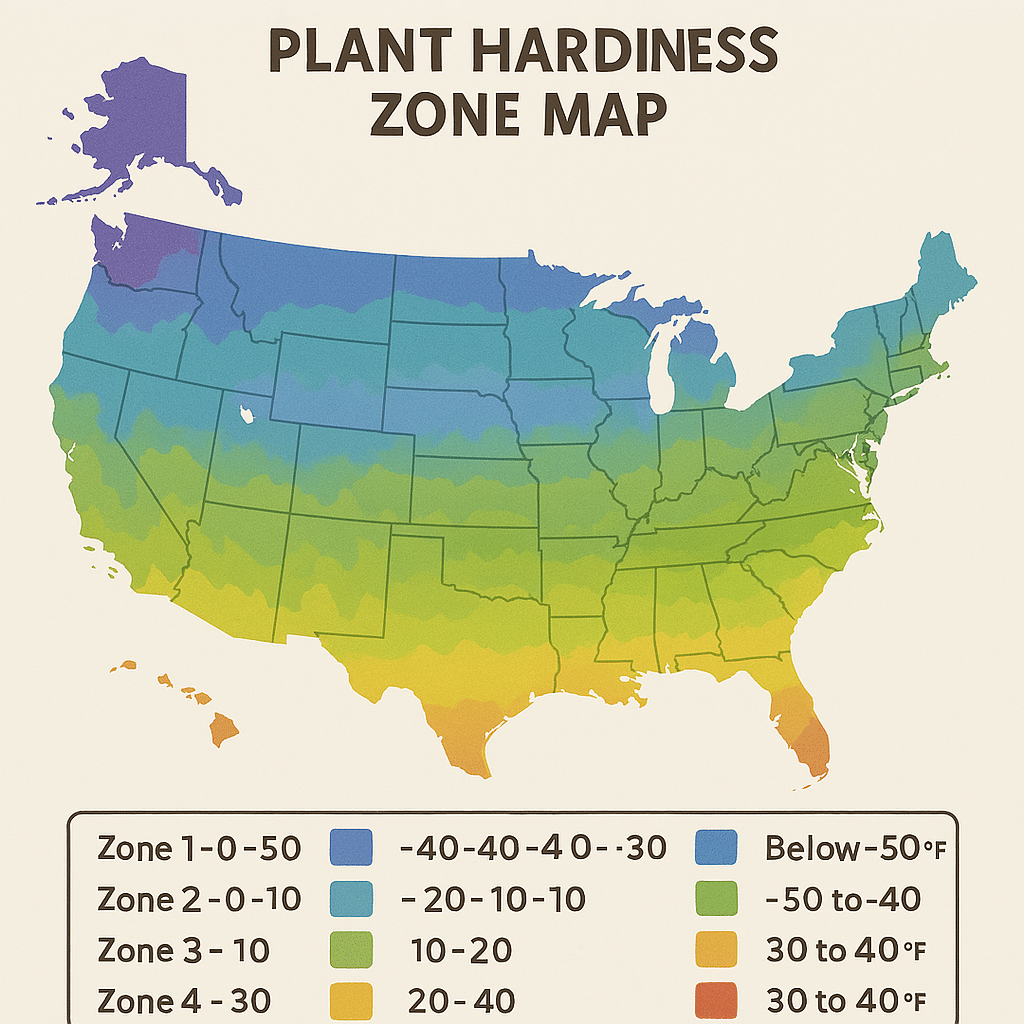
Before you dive into planting, it’s essential to understand your growing zone. Each region is characterized by its unique climate, which directly impacts the types of vegetables that can flourish in your garden. A valuable tool for this is the USDA Plant Hardiness Zone Map, which can help you identify your specific zone.
For instance, if you reside in a warmer zone, you’ll have the advantage of planting heat-loving crops, such as peppers and tomatoes, earlier in the season. In contrast, gardeners in cooler zones may need to wait until the threat of frost has passed to ensure optimal growth.
To better grasp your growing zone, consider these helpful tips:
– Utilize the USDA Hardiness Zone Map to pinpoint your zone.
– Research which vegetables thrive best in your specific climate by consulting gardening books.
– Take note of your garden’s microclimates, including areas that receive varying levels of sunlight or shade.
– Keep an eye on local frost dates to effectively plan your planting schedule.
By understanding your growing zone, you not only select the most suitable vegetables for your garden but also enhance your garden’s potential for a fruitful harvest. For further insights, consider exploring climate zone guides and local seed catalogs like those found here to optimize your gardening experience.
2. Creating a Planting Schedule
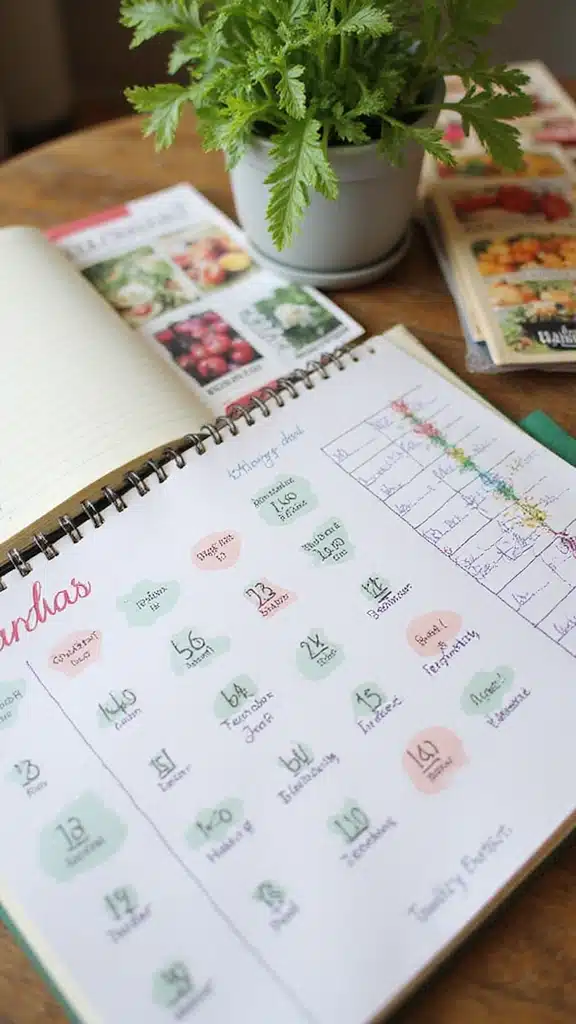
A well-organized planting schedule is crucial for ensuring the success of your garden.
Begin by compiling a list of the vegetables you wish to cultivate and their optimal planting times, which can easily be managed using a seed starting calendar or a helpful gardening app.
For instance, cool-season crops such as lettuce and peas are best sown in early spring, while warm-season varieties like zucchini and corn should be planted once the soil has warmed.
To create your planting schedule, follow these steps:
– List your selected vegetables along with their growing seasons.
– Identify the last frost date for your region.
– Plan when to start seeds indoors and when to transplant them outside.
– Consider succession planting to ensure a continuous harvest throughout the growing season.
– Regularly monitor your garden to make any necessary adjustments based on changing weather conditions.
By adhering to a well-structured planting schedule, you’ll be able to enjoy an abundance of fresh, flavorful vegetables from spring through fall. Plus, don’t forget to stock up on vegetable seed packets to have all your favorite varieties ready for planting!
3. Choosing the Right Seeds
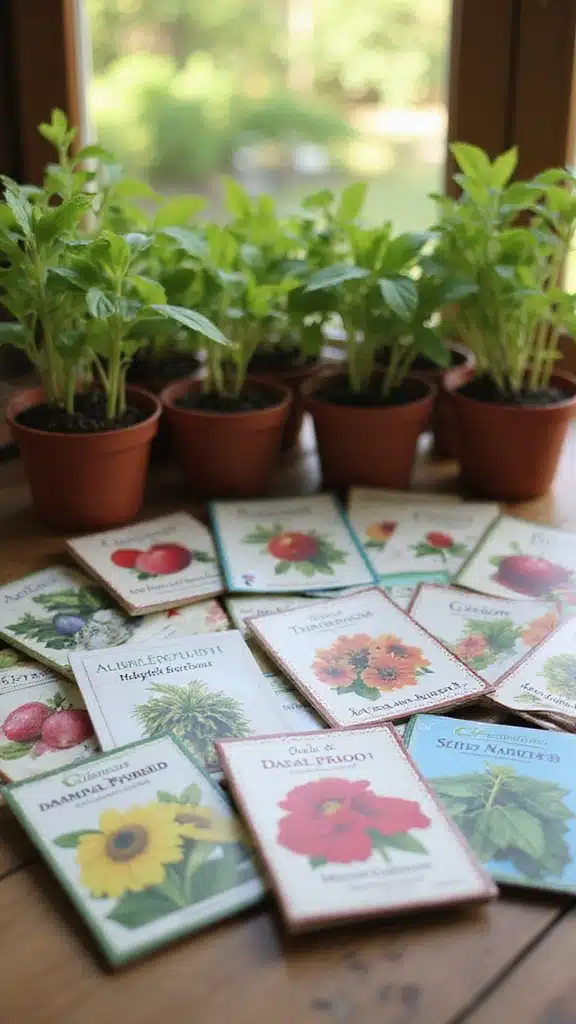
Selecting the right seeds is crucial for achieving a thriving garden.
When making your choices, think about the vegetables you love to eat, your local climate, and whether you prefer heirloom or hybrid varieties. Heirloom seeds, available in heirloom seed packets, are celebrated for their distinct flavors and characteristics, while hybrid seeds, such as those found in hybrid seed options, often provide benefits like disease resistance and enhanced yields.
To ensure you make the best selection, consider visiting local garden centers or farmers’ markets to find seeds that are well-suited to your area. It’s also helpful to research the growth habits of each vegetable to understand their space and sunlight requirements. Be sure to check seed packets for important information on germination times and disease resistance.
Additionally, think about companion planting to boost growth and deter pests. After planting, keep your seeds organized and protected with seed storage containers. For further insights into seed selection, consider exploring gardening books on seed selection. By carefully choosing your seeds and utilizing these resources, you’ll lay the groundwork for a productive and rewarding gardening experience.
4. Preparing Your Soil
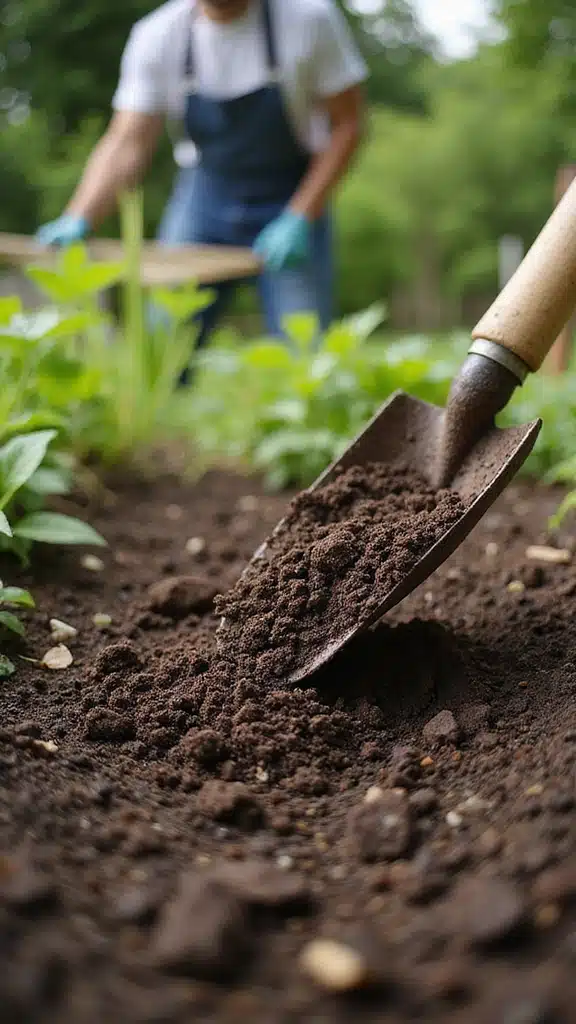
Healthy soil is the cornerstone of a flourishing garden.
Before you begin planting, it’s crucial to prepare your soil by assessing its pH and nutrient levels. A soil test kit, such as this soil test kit, can be easily purchased at your local garden center and will help you determine what amendments your soil may require.
Incorporating organic matter like organic compost or well-rotted manure can significantly enhance your soil’s structure and fertility. Additionally, be sure to clear away any weeds or debris from the planting area to create a clean slate for your vegetables.
Here are some effective soil preparation tips:
– Begin by testing your soil to understand its nutrient composition.
– Based on the test results, amend your soil by adding compost or appropriate fertilizers.
– It’s essential to till the soil to a depth of at least 12 inches for optimal aeration; consider using a garden tiller for this task.
– If you’re dealing with heavy clay or excessively sandy soil, creating raised beds with raised garden bed kits can provide a better growing environment.
With properly prepared soil, your vegetables will have the nutrients and support they need to thrive and develop into strong, healthy plants.
5. Planting Techniques
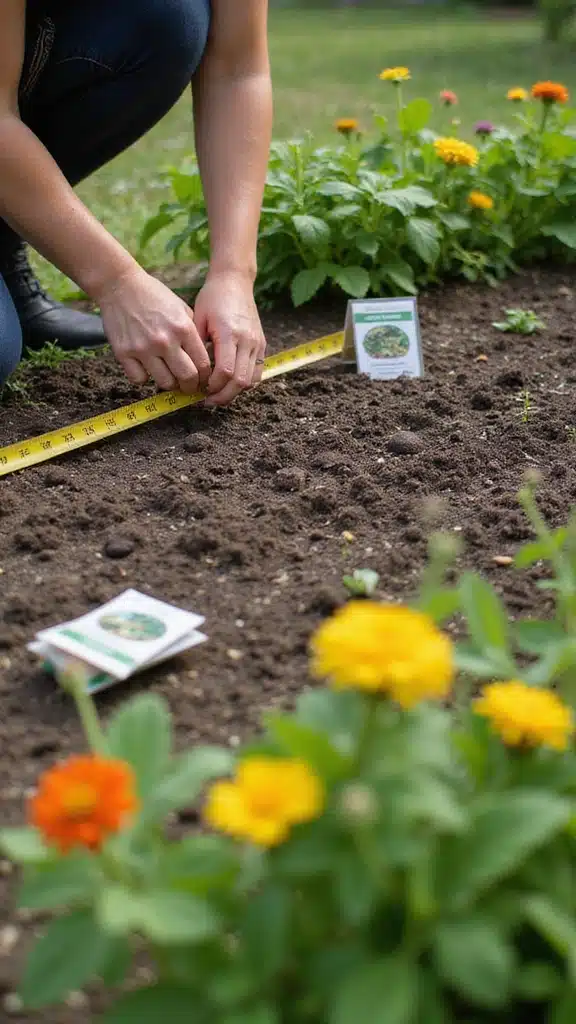
Knowing the proper planting techniques can significantly enhance your garden’s productivity.
When planting seeds, it’s important to adhere to the recommended depth and spacing indicated on the seed packets. For instance, some seeds like carrots should be sown directly into the soil, while others, such as tomatoes, thrive when started indoors. To assist you in your planting endeavors, consider using a seed dibber, which can help you make precise holes at the right depths.
Additionally, don’t overlook the benefits of square foot gardening to optimize your planting space. This method divides your garden into manageable square sections, allowing for a diverse array of plants in a compact area. For guidance on this technique, check out square foot gardening guides that provide valuable insights.
Here are some effective planting methods to consider:
– Direct sow seeds for crops that thrive outdoors, such as beans and radishes.
– Start seedlings indoors for tender crops requiring a longer growing season, using seed starting trays for optimal growth.
– Employ row planting for larger vegetables that necessitate more space.
– Implement companion planting strategies to naturally deter pests.
To keep track of what you’ve planted, using garden markers can be incredibly helpful. By mastering these techniques, you’ll ensure that your garden is both productive and efficient.
6. Watering Wisely
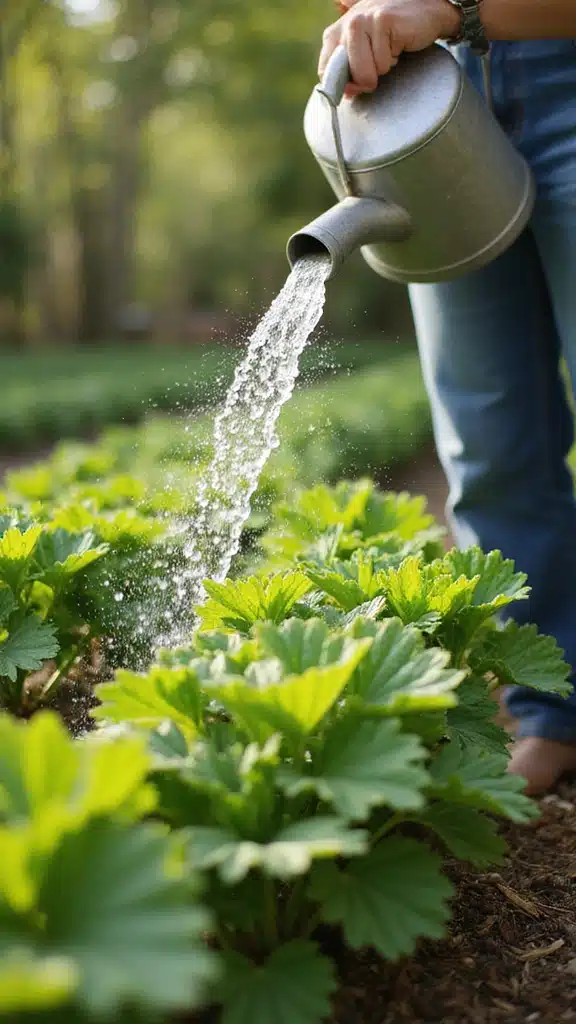
Watering plays an essential role in vegetable gardening, significantly influencing the health and productivity of your plants.
To promote deep root development, it’s best to water your vegetables thoroughly but less frequently, aiming for about an inch of water each week—whether from rainfall or your irrigation system. For optimal results, water early in the morning or late in the afternoon to reduce evaporation losses. Consider investing in a drip irrigation kit or soaker hoses, which can help deliver water right to the roots while conserving moisture.
Here are some additional watering tips to ensure your garden flourishes:
– Use mulch to maintain soil moisture levels and suppress weed growth.
– Keep an eye out for signs of drought stress in your plants, such as wilting leaves.
– Adjust your watering schedule according to seasonal changes and rainfall amounts.
– Before watering, test the soil moisture with a moisture meter to prevent overwatering.
By adopting these watering strategies and utilizing the right tools, you’ll create a thriving environment for your vegetables to flourish. Don’t forget to make use of a good watering can for those times when you need to provide additional care to specific plants!
7. Fertilizing for Growth
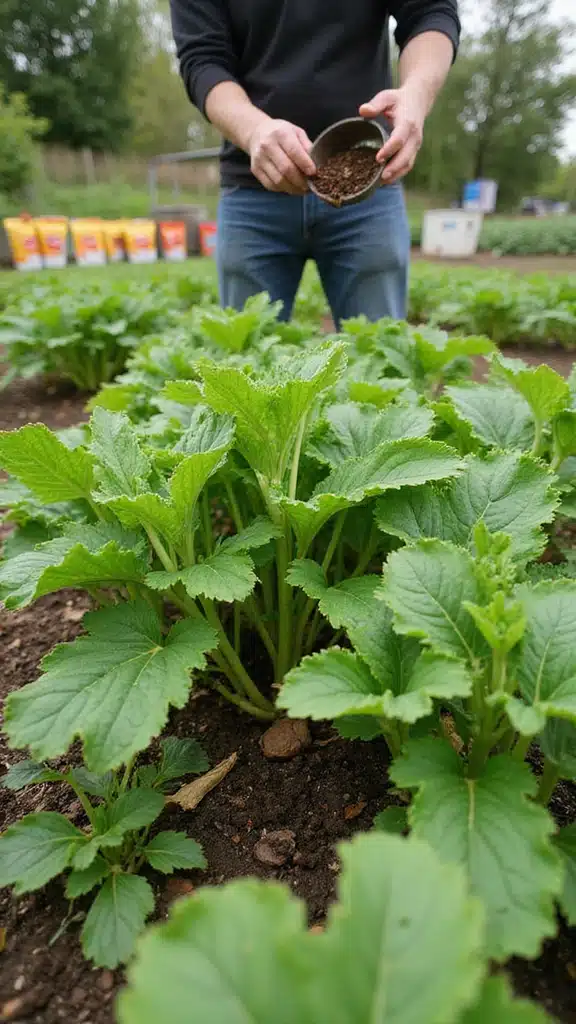
Fertilizing plays a crucial role in ensuring your plants receive the essential nutrients necessary for robust growth and vitality. Each vegetable has its unique nutrient requirements, making it vital to select the appropriate fertilizer. Organic options, such as organic fertilizers, like fish emulsion or compost tea, can significantly enhance soil quality while avoiding harmful chemicals.
When choosing a fertilizer, consider the format—whether granular, liquid, or slow-release—and adhere to the recommended application rates for optimal results.
To maximize your fertilizing efforts, keep these tips in mind:
– Start by testing your soil with a nutrient testing kit to identify any deficiencies.
– Use a balanced fertilizer during the growing season to promote overall plant health.
– Apply fertilizers at the time of planting and again mid-season as necessary.
– Opt for organic choices to maintain soil health and minimize chemical usage.
By following these strategies for fertilization, you can effectively support your plants throughout their growth cycle, leading to a plentiful harvest.
8. Pest and Disease Management

Keeping pests and diseases at bay is essential for ensuring the success of your garden. Regular inspections of your plants for signs of trouble, such as holes in leaves or discoloration, can help you catch issues early. Implementing integrated pest management (IPM) strategies allows you to control pests without harming beneficial insects, and using insecticidal soap can be an effective method in your pest control arsenal.
Encouraging natural predators like ladybugs and lacewings is another great way to keep harmful pests in check. Additionally, consider using row covers to protect your young plants from pests while they are most vulnerable. Crop rotation is also an effective strategy to prevent disease buildup in your soil.
Here are some additional pest management tips: Be sure to identify pests correctly before applying any treatments, and introduce beneficial insect kits to promote a natural balance in your garden. If you notice any affected plants, remove them promptly to prevent the spread of disease. Lastly, consider using organic pest deterrents to further safeguard your plants. By staying vigilant and proactive, you can protect your garden and enjoy a bountiful harvest.
9. Harvesting at the Right Time
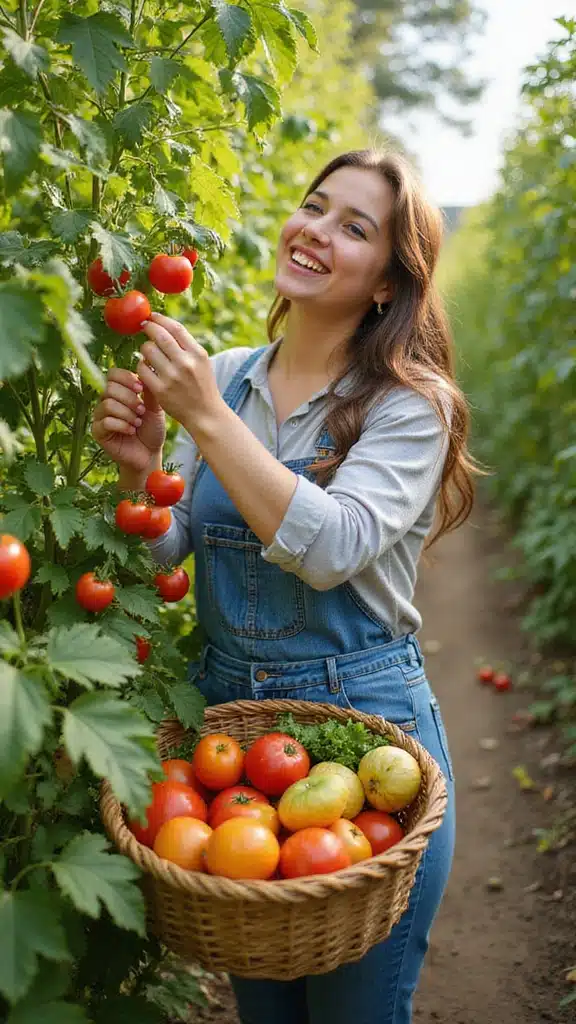
Knowing when to harvest your vegetables is essential for enjoying their fullest flavors. Each type of vegetable has its unique harvest timeline, and picking them at their peak can significantly enhance both taste and texture. For instance, tomatoes should be collected when they exhibit full color and have a slight softness, whereas cucumbers are best picked while still firm.
To make the harvesting process smoother and more efficient, consider using garden shears to minimize damage to the plants. Be gentle with the fruits to prevent bruising, ensuring they remain in perfect condition.
Here are some helpful harvesting tips to keep in mind:
– Always check seed packets for the recommended harvest times.
– Conduct a taste test by sampling a small piece to gauge ripeness.
– Regularly harvest your produce to encourage ongoing growth and production.
– Utilize harvest baskets for easy collection and transport of your vegetables.
After harvesting, it’s vital to store your vegetables properly to maintain their freshness. Consider investing in vegetable storage solutions to prolong their shelf life. Additionally, exploring food preservation books can provide you with invaluable insights on how to keep your homegrown produce at its best.
By harvesting at the right time and taking these steps, you’ll ensure the finest flavor and quality from your garden’s bounty.
10. Preserving Your Harvest
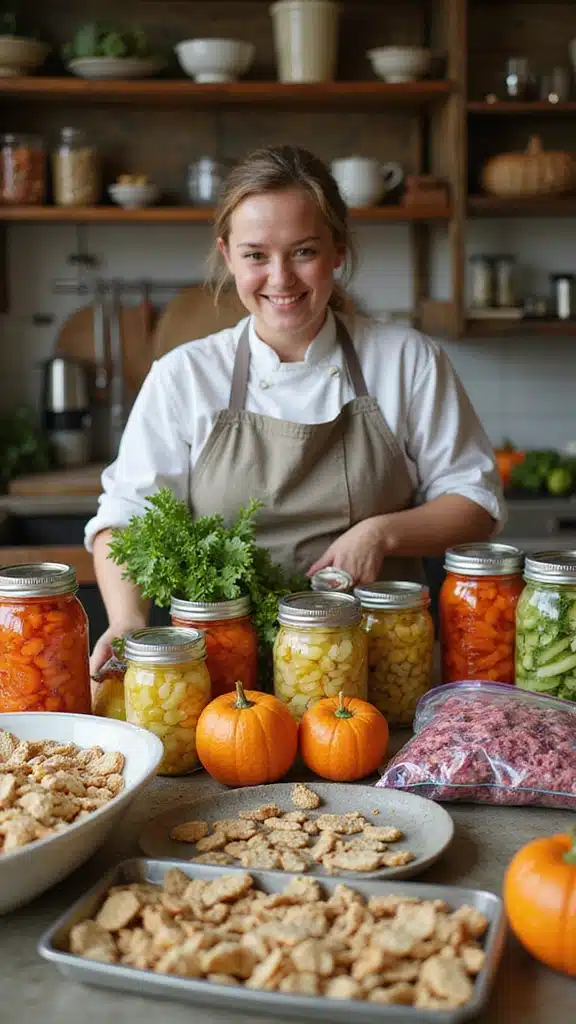
After enjoying a bountiful harvest, it’s important to take steps to preserve your vegetables for future enjoyment. There are several effective methods for preservation, including canning, freezing, and drying, each with its unique advantages that can significantly extend the life of your produce.
Canning is an excellent choice for creating delicious jams, sauces, or pickles, and for this, you’ll need quality canning jars to safely store your creations. On the other hand, freezing is ideal for maintaining the taste and texture of vegetables like green beans and corn; don’t forget to use freezer bags to keep them fresh and organized in your freezer. Dehydrating offers yet another option, allowing you to make tasty snacks such as dried tomatoes or veggie chips with the aid of a reliable food dehydrator.
To ensure successful preservation, remember to follow these essential tips: always adhere to safe canning guidelines to prevent spoilage, blanch vegetables before freezing to retain their vibrant color and essential nutrients, and store your preserved goods in cool, dark locations to maximize their shelf life. Feel free to experiment with various recipes to discover unique flavors that will delight your palate.
By taking the time to preserve your harvest, you can savor the rewards of your gardening efforts long after the growing season has passed. For further guidance, consider investing in home canning guides that can provide you with more tips and techniques.
11. Seasonal Gardening Tips
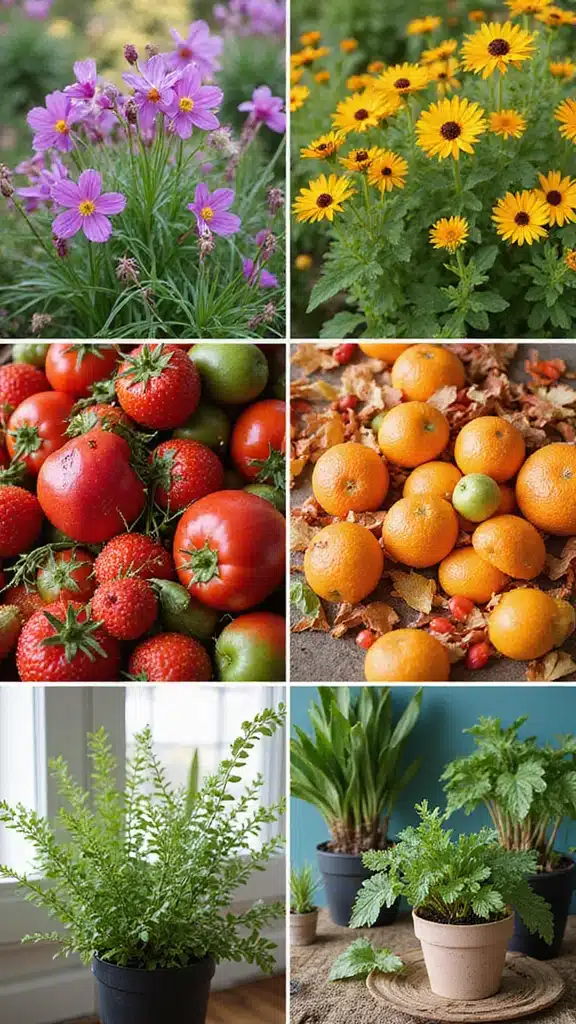
Every season presents its own set of challenges and opportunities for your garden, making it essential to adapt your practices accordingly.
In spring, prioritize preparing your soil and consider starting seeds indoors to give your plants a head start. You might find it helpful to explore seasonal gardening guides that can provide valuable insights tailored to each season’s needs.
As summer rolls in, diligent watering and effective pest control become crucial. To protect your more sensitive plants from extreme heat, using shade cloth can make a significant difference.
When fall arrives, focus on harvesting any remaining crops while also planting cover crops to enrich your soil for the upcoming season. It’s also the perfect time to organize your gardening tools; check out gardening tool organizers that can help keep everything in order.
During the winter months, take the opportunity to plan for the next gardening season and even experiment with indoor gardening. You can find essential indoor gardening supplies to keep your green thumb active.
By adapting your gardening practices to fit each season, you’ll not only ensure the health and productivity of your garden throughout the year but also set yourself up for a thriving gardening experience.
12. Companion Planting Benefits
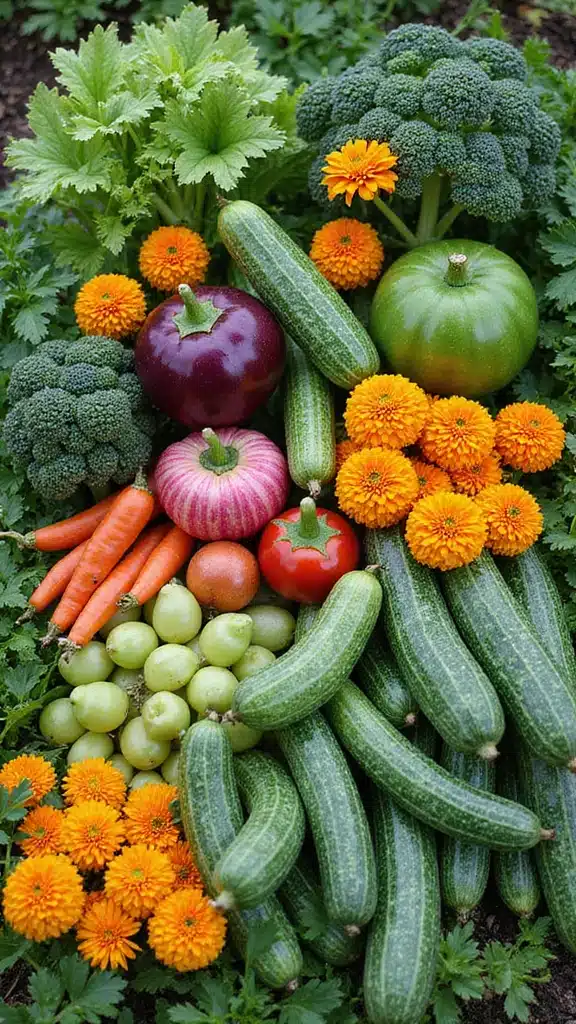
Companion planting is an effective gardening strategy that involves pairing compatible plants to boost growth and protect against pests. For instance, when you plant marigolds alongside your vegetables, these vibrant flowers can attract pollinators and deter harmful insects. Additionally, placing basil near tomatoes not only enhances their flavor but also promotes healthier growth. By understanding these beneficial relationships, you can truly maximize the potential of your garden.
To get started, consider investing in companion planting guides that provide detailed insights into which plants thrive together, such as carrots and onions or beans and corn. You can also purchase seed packets for companion plants to ensure you have the right varieties on hand.
Utilizing flowers is another great strategy to attract beneficial insects, enhancing your garden’s health. Additionally, consider keeping a gardening journal to track your planting and observe which companions perform best together.
Lastly, be mindful to avoid planting species that compete for the same nutrients or draw in similar pests. Regularly rotating your companions each season can also help maintain soil health and fertility. By incorporating these companion planting tips along with helpful resources like pest identification resources, you’ll cultivate a thriving garden ecosystem that promotes plant health and effective pest management.
13. Gardening for Sustainability
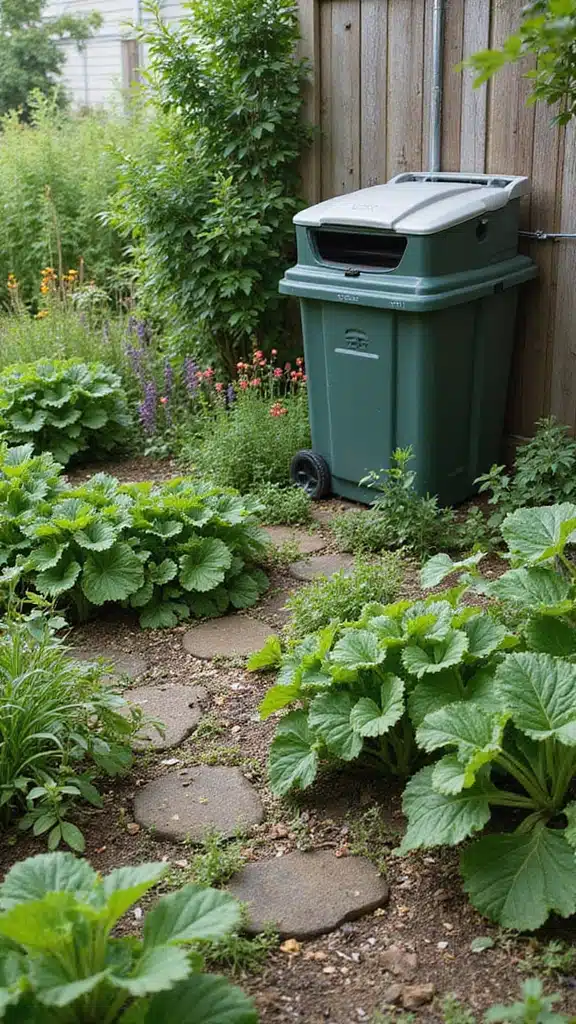
Sustainable gardening practices play a crucial role in protecting the environment while allowing you to grow your own food. By embracing organic methods, composting, and efficient water usage, you can create a thriving garden that is also eco-friendly. Minimizing chemical inputs and focusing on natural solutions not only benefits your plants but also contributes to a healthier ecosystem.
To get started on your sustainable gardening journey, consider using compost bins to recycle kitchen scraps and yard waste, enriching your soil naturally. Additionally, collecting rainwater with rainwater collection barrels can significantly reduce your water usage while providing your plants with the hydration they need.
Furthermore, opt for organic gardening supplies to protect beneficial insects and promote a balanced ecosystem in your garden. By adopting these sustainable practices, you’ll not only cultivate delicious vegetables but also play a part in caring for our planet.
14. Engaging Kids in Gardening

Gardening serves as a fantastic opportunity to engage children and impart lessons about nature and responsibility. By involving kids in the gardening process, you can nurture their appreciation for plants and promote healthy eating habits. Start by creating a small vegetable patch or a flower garden where they can actively participate in planting, watering, and harvesting their own crops.
To make the experience enjoyable, consider using kids’ gardening tool sets that are designed for small hands, along with colorful plant markers to help them label their plants. Encourage them to keep a gardening journal to document their growth progress, which can be a fun and educational way to reflect on their gardening journey.
Additionally, plan themed gardening days filled with exciting activities, such as painting pots or creating custom plant markers. You can also introduce them to seed packets for child-friendly vegetables like carrots and radishes for quicker results. By engaging kids in gardening, you’ll not only create cherished memories but also instill valuable life skills that will last a lifetime.

Sharing your gardening journey not only enhances your own experience but also inspires others to embark on their own green adventures. By documenting your progress through engaging photos and insightful blog posts, you can create a vibrant community of fellow gardening enthusiasts. To elevate your documentation efforts, consider using photography tools for garden documentation, which can help you capture the beauty of your plants and share stunning visuals with your audience.
Additionally, starting a gardening blog or a dedicated social media account can be a great way to showcase your progress. Utilize social media marketing guides to effectively engage followers and share your gardening tips and experiences.
Connecting with like-minded individuals is also essential; consider joining local gardening clubs or online forums to share insights and learn from others. You might even want to host a garden tour or open house to invite friends and neighbors into your space. Participating in community gardening projects or workshops can further enrich your journey while fostering connections.
For those who want to deepen their involvement in the gardening community, exploring gardening community memberships can provide valuable resources and opportunities. By sharing your gardening journey, you’ll not only celebrate your accomplishments but also motivate others to cultivate their own green thumbs.
Conclusion: Cultivate Your Seasonal Garden

Now that you have your ultimate seasonal vegetable planting guide, it’s time to get started on your gardening journey!
With tips on everything from soil preparation to harvesting, you have the tools you need to create a thriving garden filled with delicious vegetables.
Remember, gardening is a rewarding process that takes patience and passion. Embrace the journey and enjoy the fruits of your labor!
Get your hands dirty and let the magic of gardening unfold!
Note: We aim to provide accurate product links, but some may occasionally expire or become unavailable. If this happens, please search directly on Amazon for the product or a suitable alternative.
This post contains Amazon affiliate links, meaning I may earn a small commission if you purchase through my links, at no extra cost to you.


